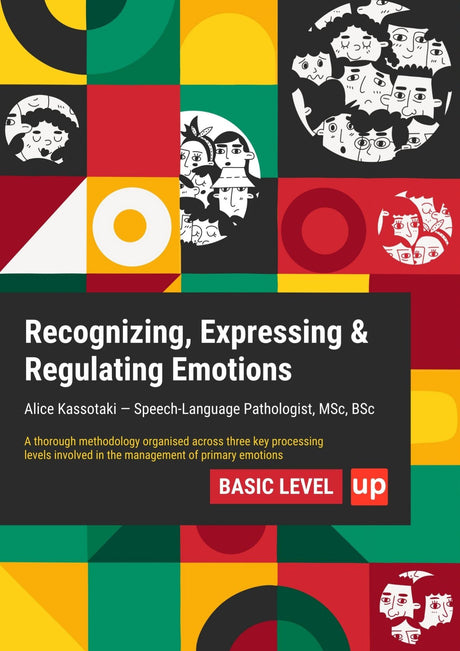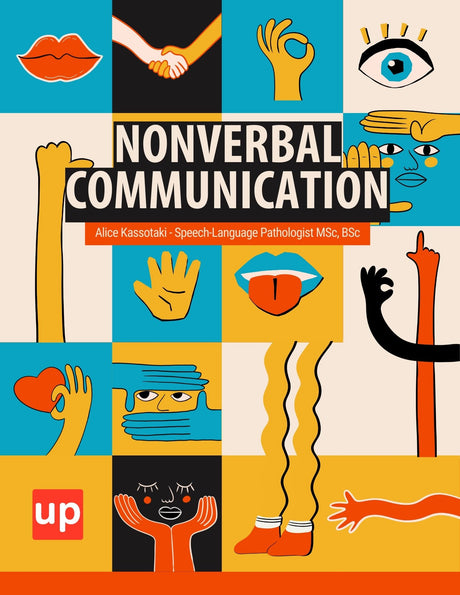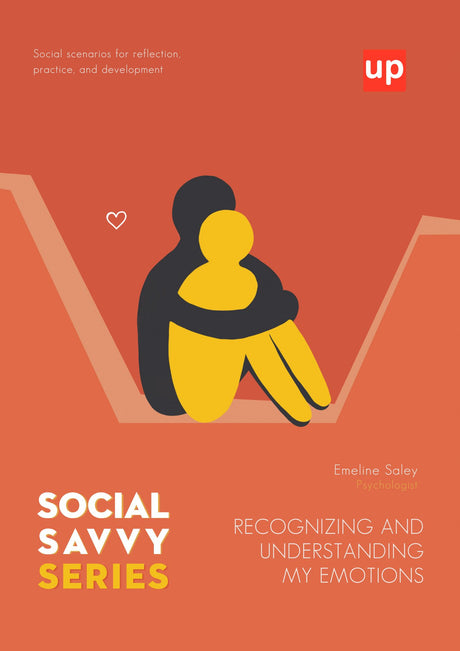A quiet child in a busy classroom, one who hesitates to speak to unfamiliar adults, or a toddler clinging to a parent’s leg at a party—these are common sights often attributed to shyness. For many children, this is a temporary phase, a normal part of their emotional development. However, for a small subset, this silence is not a choice or a simple personality trait; it is a manifestation of a debilitating anxiety disorder known as Selective Mutism. Confusing this condition with shyness can lead to missed opportunities for crucial early intervention. This article will provide a comprehensive guide to understanding the critical differences between Selective Mutism and shyness, how to identify the signs, and when to seek professional support.
Key Points
- Selective Mutism is a clinical anxiety disorder, not just extreme shyness. It involves a consistent inability to speak in specific social situations despite being able to speak comfortably in others, often driven by intense anxiety.
- Early diagnosis and intervention are crucial. Without timely support, selective mutism can severely impact a child’s social development, education, and emotional well-being, potentially leading to long-term difficulties such as social isolation and low self esteem.
- Support requires collaboration among parents, educators, and clinical psychologists. A tailored treatment plan involving behavioral therapies and anxiety reduction strategies is essential to help the child gradually regain their ability to communicate in feared settings.
Understanding the Nuance: Selective Mutism vs Shyness

To effectively support a child, it is essential to first grasp the fundamental distinction between a common personality trait and a diagnosable anxiety disorder. Selective mutism must be diagnosed by a professional, as a formal diagnosis is crucial for distinguishing it from ordinary shyness and ensuring the right treatment approach. While both may present as quietness in social situations, their origins, impact, and required responses are profoundly different.
Shyness: A Common Personality Trait and Developmental Stage
Shyness is a well-understood personality trait characterized by feelings of awkwardness, apprehension, or discomfort in new social settings or with unfamiliar people. A shy child might feel anxious when meeting new peers or being the center of attention. However, this discomfort is typically manageable. With time and gentle encouragement, a shy child will often “warm up.” They may start by speaking softly or in short sentences before eventually engaging in more fluid social interaction. Shy children are generally able to participate in daily activities and communicate, even if they feel uncomfortable or hesitant. Shyness does not consistently paralyze a child’s ability to function. They can still answer a question in the classroom at school, even if hesitantly, or whisper a “thank you” to a relative. It is a temperamental inclination, not a clinical impairment.
Selective Mutism: A Specific Anxiety Disorder
Selective Mutism (SM) is a complex childhood anxiety disorder characterized by a child’s consistent inability to speak in specific social situations, certain situations, or specific settings where there is an expectation of speaking, despite being able to speak comfortably in other settings. Children who are selectively mute are unable to speak in these environments due to anxiety, even though they can communicate normally at home. Affecting about 1 in 140 young children, SM is not shyness, defiance, or manipulation. Many kids with selective mutism want to speak but are unable to do so in certain situations. It is a genuine phobic response to the expectation of speech. Kids with selective mutism might be vibrant, chatty, and loud at home with their family but become completely nonverbal and appear frozen at school or a family gathering. This lack of speech is driven by severe anxiety, creating a feeling that the vocal cords are “stuck” and words simply cannot come out. Children with selective mutism often display a type appearance, such as a "deer in the headlights" look or a lack of facial expression, in specific settings where they feel anxious. The selective mutism experience involves intense internal challenges, including fear, worry, and self-consciousness, which can make social interactions extremely difficult. A child's selective mutism can manifest differently depending on the environment, with some kids able to speak in familiar places but not in others. Selective mutism typically begins between the ages of 2 and 4 years old and does not resolve on its own; early intervention is crucial, as the disorder can significantly interfere with a child’s education, social life, and overall emotional development if left unaddressed.
Key Differences: Shyness versus Selective Mutism in Practice
Understanding the theoretical definitions is the first step. It is important to differentiate selective mutism from shyness, as this helps clarify their unique characteristics and ensures accurate identification. Recognizing the differences in real-world behavior is critical for accurate identification.
Nature of the Condition
The most fundamental difference lies here: shyness is a personality trait, whereas Selective Mutism is a diagnosable psychological disorder classified under anxiety disorders. Sometimes, extreme shyness can be mistaken for selective mutism, but while extreme shyness may involve significant social withdrawal or anxiety, it does not reach the level of impairment or clinical criteria required for a diagnosis of selective mutism. This distinction is paramount because a trait is part of an individual’s temperament, while a disorder is a clinical condition that causes significant impairment and typically requires targeted treatment. The high comorbidity of SM with other anxiety disorders further underscores its clinical nature; a meta-analysis found that 80% of individuals with SM also had other anxiety disorders.
Consistency and Context of Speech (The "Silent Switch")
This is perhaps the most telling differentiator. A shy child is typically quiet in most new social situations but will gradually begin to speak as they become more comfortable. Their quietness is a gradient, but there is a point where shyness transitions into a more problematic level, impacting the child's ability to interact socially or participate in activities. In contrast, a child with Selective Mutism often displays an “on/off” switch. They can be completely verbal and socially engaged in a “safe” environment, like home, when they feel safe, but consistently nonverbal in a “trigger” environment, like school. This lack of speech is predictable and persistent in those specific social settings, regardless of how much time passes.
Nonverbal Communication and Social Engagement Patterns
While a shy child may avert their gaze or speak softly, they can generally use nonverbal cues like smiling or waving in a socially appropriate manner. A child with SM, when in a trigger situation, may appear frozen with a blank facial expression. Their anxiety is so high that it can inhibit their ability to use even nonverbal skills effectively. They often want to engage but are paralyzed by fear, leading to social withdrawal. They may rely on pointing or nodding to communicate basic needs but struggle to initiate any form of social interaction, especially with other children in group settings, or with adults.
Internal Experience and Duration of Symptoms
For a shy child, the internal experience is one of discomfort or self-consciousness that lessens with familiarity. For a child with SM, the internal experience is one of intense panic and a feeling of being physically unable to speak, often driven by the child's anxiety in social situations. Many older children who have overcome SM describe it as a terrifying “freeze” response. For a selective mutism diagnosis, the symptoms must persist for at least one month (beyond the first month of a new setting, such as school) and significantly interfere with educational or social functioning.
Impact on Daily Functioning and Emotional Development
While severe shyness can create challenges, it rarely brings a child’s social and academic life to a halt. Selective Mutism, however, can be profoundly impairing. It prevents a child from asking for help, participating in classroom activities, making friends, and expressing their needs or pain. If left untreated, this persistent social withdrawal can result in social isolation and increase the risk of developing depression, further worsening social anxiety and having a significant negative impact on long-term emotional development.
Identifying Selective Mutism: An Identification Guide

Recognizing SM requires careful observation of behavior patterns across different settings. Parents and educators are uniquely positioned to notice the crucial contrasts.
Observable Behaviors for Parents and Educators
- Dramatic Contrast: The child is talkative, playful, and has normal language skills at home but is consistently silent at school or in other specific social situations.
- Persistent Silence: The inability to speak in certain settings lasts for more than one month.
- Anxious Body Language: In trigger settings, the child may have a frozen or "deer-in-the-headlights" look, avoid eye contact, and appear socially withdrawn or aloof.
- Reliance on Nonverbal Cues: Communication is attempted through gestures like pointing, nodding, or writing, as a substitute for speech.
- Functional Interference: The lack of speech clearly impacts the child’s ability to participate in school, build friendships, or engage in age-appropriate activities.
Practical Scenarios for Differential Diagnosis
Consider two children at a peer’s birthday party. The shy child—like most shy kids—may hide behind their parent for the first 20 minutes, quietly observe, and then slowly join a game, perhaps whispering to another child. The child with Selective Mutism may stand rigidly beside their parent for the entire event, unable to speak when asked a question, unable to say “thank you” for a gift, and unable to join any activities, despite wanting to. The difference is not in the initial hesitation, but in the persistent inability to overcome the barrier to communication.
Ascertaining the Internal Experience
When in a safe environment, a parent might be able to talk to their child about their experience. Children with selective mutism often speak freely with family members at home, but may struggle to do so outside of this familiar setting. An older child may be able to express their feelings, describing a sense of fear, their throat feeling tight, or that “the words won’t come out” when they are at school. These descriptions are powerful indicators that the issue is rooted in anxiety, not opposition or shyness.
Differentiating Selective Mutism from Other Conditions
Accurate diagnosis is crucial, as SM can be mistaken for other conditions, and it is important to rule out language delays when diagnosing selective mutism.
Selective Mutism versus Social Anxiety Disorder (SAD)
Selective Mutism is considered an anxiety disorder and is highly related to Social Anxiety Disorder (SAD). In fact, most children with SM also meet the criteria for SAD. The primary distinction is the core symptom. While SAD involves a broad fear of social scrutiny and negative evaluation that can manifest in many ways, the hallmark of SM is the consistent inability to speak. The way selective mutism presents can vary significantly from person to person, with each person experiencing different challenges and degrees of impact. An adolescent with only SAD might feel terrified to give a presentation but can force themselves to do it. An adolescent with SM would likely be completely unable to produce sound in that situation.
Selective Mutism versus Autism Spectrum Disorder (ASD)
While both conditions can involve challenges with social interaction, the underlying reasons are different. A child with ASD typically has pervasive difficulties with social communication and reciprocity across all settings. In contrast, a child with Selective Mutism, by definition, demonstrates age-appropriate language and social skills in at least one comfortable setting, showing a marked difference in the child's ability to communicate depending on the environment. The social challenges in SM are context-dependent and driven by anxiety, not a core deficit in social understanding.
Selective Mutism versus Language Disorders or Speech Abnormalities
A selective mutism diagnosis requires that the lack of speech is not better explained by a communication disorder (like stuttering) or a lack of knowledge of the spoken language. Research suggests that differences in the brain, particularly in areas like the amygdala, may contribute to selective mutism by affecting anxiety responses and speech inhibition. These neurological differences in the brains of affected children can play a significant role, alongside environmental and psychological factors. A thorough evaluation by a speech-language pathologist is often necessary to rule out any primary language disorders or physical speech abnormalities affecting the vocal cords.
Seeking Support: The Imperative of Early Intervention

Recognizing the signs of Selective Mutism is the first step toward helping a child find their voice. Treating selective mutism early is crucial, as timely intervention can significantly improve outcomes for affected children. Developing a personalized treatment plan, in collaboration with therapists, is essential to set realistic goals and outline effective strategies for overcoming selective mutism.
The Critical Importance of Early Identification
Without intervention, Selective Mutism can become a deeply entrenched pattern of behavior that grows more difficult to treat over time. The longer a child is silent in a particular setting, the more the expectation of silence becomes ingrained for both the child and those around them. A family history of anxiety or psychological disorders can increase a child's risk of developing selective mutism, making early identification especially important for at-risk children. With reports showing a significant increase in referrals—one clinic noted an 80% increase in 2022 compared with 2019—awareness and early action are more important than ever.
Criteria for Seeking Professional Assistance
If you observe a consistent pattern of a child speaking freely at home but not in other key social settings for over a month, and this is impacting their life, it is time to seek help. Consulting a child psychologist for assessment and intervention is recommended, as they can provide specialized support tailored to your child's needs. Do not assume the child is just being a “shy child” or that they will “grow out of it.”
The Role of Professionals in Diagnosis and Treatment
A comprehensive evaluation is key. This team often includes a pediatrician, a psychologist or therapist specializing in anxiety, and a speech-language pathologist. The speech therapist can rule out communication disorders, while the psychologist can confirm the anxiety-based nature of the condition. Professionals, parents, and teachers all play a collaborative role in supporting the child, providing practical strategies and encouragement throughout the treatment process. Treatment typically involves behavioral therapies like Cognitive Behavioral Therapy (CBT) and a focus on gradual exposure techniques to help the child slowly build confidence speaking in feared situations.
Conclusion
Distinguishing between shyness and Selective Mutism is not merely a matter of semantics; it is a critical step in identifying a child in distress and unlocking the support they need. While shyness is a common personality trait that children often navigate with gentle support, Selective Mutism is a severe anxiety disorder that can freeze a child’s ability to communicate, connect, and thrive. By understanding the key differences—the clinical nature of the condition, the consistent "on/off" pattern of speech, the profound impact on functioning, and the intense internal anxiety—parents and educators can become crucial allies. If you recognize the signs of Selective Mutism in a child, the most powerful action you can take is to seek early, professional guidance. With empathy, patience, and the right therapeutic strategies, a mute child can overcome their anxiety and find the confidence to share their voice with the world.
Frequently Asked Questions (FAQ)
What is the main difference between selective mutism and shyness?
The main difference is that shyness is a personality trait characterized by discomfort in new social situations, while selective mutism is a clinical anxiety disorder causing a consistent inability to speak in specific social settings despite being able to speak comfortably elsewhere.
Can a shy child develop selective mutism?
While shyness and selective mutism are different, children who are very shy and have a family history of anxiety disorders may be at higher risk for developing selective mutism. However, selective mutism is a distinct anxiety disorder and not simply an extreme form of shyness.
At what age does selective mutism typically appear?
Selective mutism typically begins between the ages of 2 and 4 years old, often becoming more noticeable when a child starts attending structured social settings like preschool or daycare.
How is selective mutism diagnosed?
A professional, usually a child psychologist or clinical psychologist, diagnoses selective mutism based on the child's consistent inability to speak in specific social situations for more than one month, ruling out other causes such as language delays or autism spectrum disorder.
What treatments are effective for selective mutism?
Treatment usually involves behavioral therapies such as Cognitive Behavioral Therapy (CBT), gradual exposure techniques, and collaboration between parents, educators, and therapists to create a supportive environment that reduces anxiety and encourages communication.
Can selective mutism be outgrown without treatment?
Selective mutism typically does not resolve on its own and often requires early intervention. Without treatment, the condition can worsen, leading to increased social isolation and other emotional difficulties.
How can parents and teachers support a child with selective mutism?
Parents and teachers can support the child by avoiding pressure to speak, acknowledging the child's anxiety, praising any form of communication, providing a safe and accommodating environment, and collaborating closely with mental health professionals to implement a consistent treatment plan.
Original content from the Upbility writing team. Reproducing this article, in whole or in part, without credit to the publisher is prohibited.
References
-
American Psychiatric Association. (2013). Diagnostic and Statistical Manual of Mental Disorders (5th ed.). Arlington, VA: American Psychiatric Publishing.
-
Johnson, M. (2020). Selective Mutism Resource Manual. Academic Press.
-
Bergman, R. L., Piacentini, J., & McCracken, J. T. (2002). Prevalence and Description of Selective Mutism in a School-Based Sample. Journal of the American Academy of Child & Adolescent Psychiatry, 41(8), 938-946.
-
Oerbeck, B., Stein, M. B., Wentzel-Larsen, T., & Kristensen, H. (2018). Selective Mutism: A Review of Etiology, Assessment, and Treatment. Frontiers in Psychology, 9, 2134.
-
National Institute of Mental Health. (2023). Anxiety Disorders. Retrieved from https://www.nimh.nih.gov/health/topics/anxiety-disorders
-
Viana, A. G., Beidel, D. C., & Rabian, B. (2009). Selective Mutism and Social Anxiety Disorder: All in the Family? Journal of Anxiety Disorders, 23(3), 305-311.
-
Muris, P., & Ollendick, T. H. (2015). Selective Mutism and Social Anxiety Disorder: All in the Family? Clinical Child and Family Psychology Review, 18(2), 151-163.
-
Klein, R. G., & Hood, J. (2004). Selective Mutism: A Review of the Literature. Journal of the American Academy of Child & Adolescent Psychiatry, 43(8), 995-1003.
-
American Speech-Language-Hearing Association. (2022). Selective Mutism. Retrieved from https://www.asha.org/public/speech/disorders/selective-mutism/
-
Upbility Writing Team. (2024). Selective Mutism vs Shyness. Retrieved from [Original Article URL]









